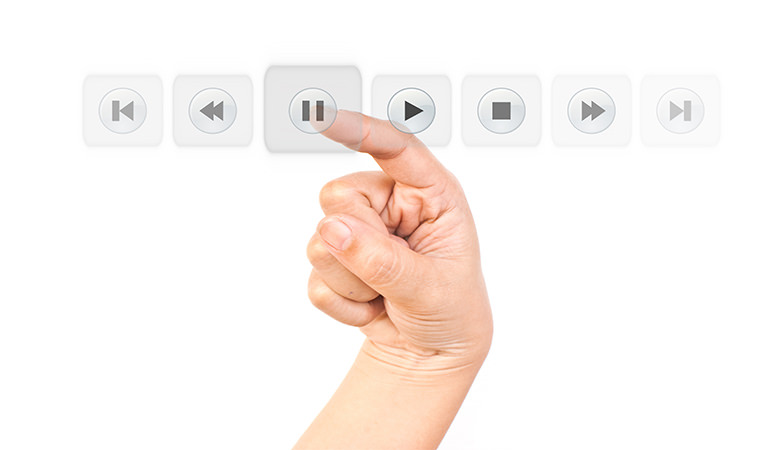As an executive coach, listening to your clients is essential. If you do not have good listening skills, it is unlikely that your clients will feel heard or understood and the all-important bond of trust between you will never develop properly. However, if listening to clients is your only focus and you have not developed the ability to listen to yourself as a coach, you will never be wholly effective.
Listening to yourself as a coach is not about going to town on shifting attention to yourself in a meeting or making yourself the centre of attention. You are there for your client. That is the contract. Rather, it is about providing the best possible quality of attention to your client, and to yourself within that context. The thing is, it is easier said than done! No matter how hard you try, you will be responding in a variety of different ways, even if you do not consciously register your reactions. Moreover, they will form part of the coaching mix, albeit in the background. It will have an impact on how you come across, an effect on your presence.
If you ignore the need to listen to yourself, the coaching experience will probably be less satisfying for you and less than dynamic for your client. Luckily listening to your inner responses can enhance the power of your coaching dramatically. So how, exactly, does listening to yourself deepen the quality of your coaching?

How listening to yourself boosts the impact and quality of your coaching
Being there for your client, along with an awareness of your inner processing – your thoughts and feelings – takes practice. To listen to yourself while coaching, holding your experience seriously yet lightly, takes time. It takes practice to make that level of awareness a natural part of your repertoire, an innate skill. It involves being able to work at different levels, feeding your ability to remain present whatever is happening in the coaching session.
This form of mindful listening occurs in the moment, at the same time as a conversation takes place. It is part of the background, an element of what Gestalt psychology calls the ‘field’ conditions. You can harness the inner chatter of your thoughts, the range of emotions that you are experiencing and your intuition to inform and enhance coaching conversations.
The messages – whether they are thoughts, imaginings, feelings or bodily sensations – are all part of the experience, all valuable to the learning process. As long as you can hold them loosely and notice them as they happen, they have the power to inform the relevance of your questions and inspire the type and range of coaching intervention that you choose.
How do you know which factors are significant?
As soon as you move into a coaching conversation, multiple variables come into play. It can be challenging to know which of them matter. You can offer your awareness into the session to be taken up by your client, or not. Like so much in life there are no guaranteed outcomes. Your coaching intervention may land beautifully. It might create a diversion. Alternatively, your client might resist it.
Executive coaching supervision can help here, providing a useful forum for reflection. Regular supervision is an essential part of good practice for coaches, and many organisations check it is in place before hiring a coach. Professional coaching supervision supports you as well as challenges you to listen to yourself and continuously increase the bandwidth of your self-awareness.
Understanding and exploring some of the habits you pick up as a coach will help you harness even more awareness. Understanding the recurrent themes that you tend to explore inwardly can take some of the power and sting out of them, including how you sell your services, prepare to coach, experience coaching sessions and the reflections you make afterwards.
Acknowledging the subtle pull of performance pressure
Some of these themes are familiar to many coaches, part of the executive coaching territory. Let’s look at an example theme: the way you handle subtle performance pressure.
How do you demonstrate that you are worth the investment a company or individual is making in you? Negative thoughts can invade your coaching session, followed by questions about your worth. These can hold you back and affect how insightful you can be. These reactions are understandable, especially in a landscape where there’s a growing debate about how tough it is to evaluate the effectiveness of our work as executive coaches. You might well find that your next coaching job depends on feedback from your current client.
Obviously, these thoughts are not productive. Quite the opposite! However, negative as they are, it makes sense to listen to them rather than keep trying not to let them leak into the session. You will only end up trying too hard to impress, trying too hard to be a good coach. Your client might even tap into your performance anxiety, and your fears can ultimately end up taking over the much of the meeting.
Handling judgements with flair and ease
Another tricky theme in executive coaching is the way you handle your inner dialogue at so-called ‘chemistry’ meetings. How do you talk about your coaching approach and stay centred when you are re pitching yourself against one or more other coaches, something that’s sometimes jokingly called a Beauty Parade?

In this situation, the client talks to each coach separately before choosing which suits them best. The situation is rife with judgements and factors you cannot control. Is it best to be the first or the last coach the client talks to in that process? How on earth do you keep on an even keel in these difficult circumstances before, during and afterwards?
You consciously know that the client needs a sense of agency, and making a choice gives them what they need. You also know the chemistry between client and coach is incredibly important. However, none of that stops the feelings of rejection and failure you feel when you are not chosen. It is very human, very natural, but it is not helpful in a professional context. We know it is hard not to take personally.
It is great to have a good level of awareness about how you might improve your pitch next time. After all, there’s learning in every encounter. However, there’s also a healthy dose of not caring, not minding, that helps keep you resilient. Simply rejecting the notion that you are involved in a Beauty Parade can help!
Giving yourself that essential moment of choice
Your preferences and values as a professional and the clusters of beliefs that wrap around them will influence how you coach. All of us have filters we use to distort, delete or generalise our experiences. We unconsciously look for evidence that supports our beliefs, something called confirmation bias, and we link these with our interpretations of life, the universe and everything.
Recognising these reactions as they appear in the background during a coaching conversation provides you with the opportunity to step back. You can place a gap between the stimulus and your response, giving yourself a valuable pause point, a moment of choice where you consciously decide whether to let the feelings go or move your reaction into the conversation.

During your coaching sessions, these filters will guide what you pay attention to. They will probably fuel how and when you jump to conclusions, and how easily it happens. You might recognise a trigger that has just gone off or a point at which your touch paper is about to be lit. Catching a glimpse of your triggers early on helps you to decide whether or not to disclose them openly.
A gnawing, uncomfortable sensation is a common warning sign, a signal that you have an ethical dilemma in front of you, a line you do not want to cross. Listening to your body at this point rather than ignoring it could prove critical. Whatever the issue, noticing these problems, paying attention to them and pausing to consider them will guide you.
Noticing similarities between you and your client
Everyone has different preferences, styles of working and ways of perceiving the world. Seeing the similarities and differences between you and your client is vital. Do you consciously examine them, or do you find yourself on autopilot? If so, you can bring in a pause, give yourself the chance to think about what you are doing. Otherwise, you can quickly get pulled into an inability to challenge your client because you have become confluent with them. In a situation like this, you are left with minimal scope to explore other perspectives. If you do not listen to yourself, don’t ask yourself questions, it can become a dangerous coaching pitfall.
Inadvertently muddying the waters
How many times has a client reminded you of someone from your past? If so, in what way? It can take a while to work out unless you are in self-questioning mode. Unconscious projection on your part can cause noise and confusion in a coaching relationship. Being aware of whether your client reminds you of someone else – ideally from the start – brings clarity.
If you do not ask the questions and listen to your answer, you can end up carrying the unconscious association through multiple sessions. This tendency ultimately creates transference and countertransference, considerably muddying the coaching waters.
When you are certain, you know the answer
Sometimes you are certain you know the answer. The solution is obvious. Why can’t your client see it? Listening to your urgency, your growing need to solve the client’s problem delivers a warning sign. You are there, as an executive coach, to help your clients resolve their issues themselves.
Maybe you are overly advising or controlling: leaning forwards, speaking faster, becoming agitated. These are all messages you can catch when you regularly listen to yourself. They give you vital clues that the session is tipping out of balance. If it happens, it could be time to let go a little and find a new place of ease for yourself.
Dealing with not knowing
Perhaps you feel out of your depth, insecure about how to approach a topic. It is a horrible feeling, that you are too small, that you do not know enough. You feel increasingly uncertain, stuck and a bit sick. All these nasty undercurrent messages can be picked up early when you are listening to yourself. Moreover, once you notice them, you can work to defuse them.
Maybe you are scared to move over that edge and admit you are stuck, with no idea what to do next. However, if you did, you might just find your client feels like that too. Maybe you are picking up their signals, or signals from the wider organisational culture that your clients operates in.
You can choose whether to share what’s going on for you. Your input might shift the session and evoke new insight. Without listening to yourself, you will never know what might have happened differently. You will probably leave the session feeling just as uneasy as you did during it.
Being there for your client
Listening to yourself does not mean you have less energy and capability to listen to your client. The opposite is true. Your self-awareness adds to the vibrancy, the sense of discovery you get in a great, positive session. It can open new avenues to explore, and be used to reveal parallels in the client’s organisation or team. Above all, for you as a coach, inner listening provides you with more choices and options to work effectively with your clients.
Get help developing self-awareness
Listening to yourself, and not fusing with your process, helps you to coach with greater clarity and impact. Developing increased self-awareness is part of any executive coach’s professional growth, and we offer top quality coaching supervision. Contact us here.
About us:
We create the space for leaders to step back, think clearly, and navigate complexity with confidence. By sharpening the narrative that drives decisions, teams, and performance, we help leaders move forward with clarity and impact. Our approach blends deep listening, incisive challenge, and commercial focus—strengthening leadership at every level, from business transformation to boardroom decisions.
“We share resources that help coaches deepen their practice and expand their impact. The articles on this site are designed to spark fresh thinking, offer practical tools, and support the continuous growth of coaches at every stage. “
Jude Elliman
Founder
Our Core Approach:
We work with leaders to sharpen their thinking, strengthen their leadership, and navigate complexity with confidence. Our approach is built around three core areas:
Narrative Coaching – Working with the stories that shape leadership, teams, and organisations.
Commercial Focus – Cutting through complexity to drive clear, strategic decisions.
Challenge & Space – Asking the right questions while creating the space to reflect and grow.
Through this, we help leaders drive transformation, align teams, and make high-stakes decisions with clarity and impact.
